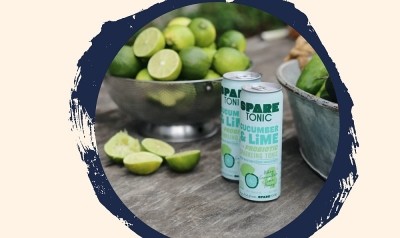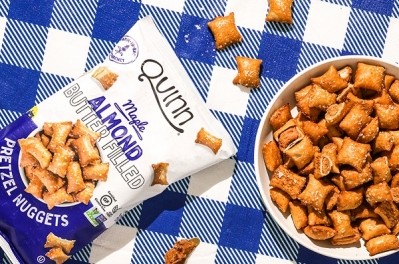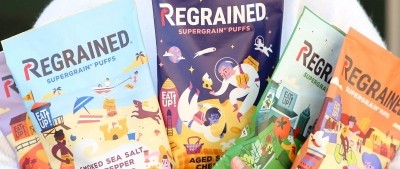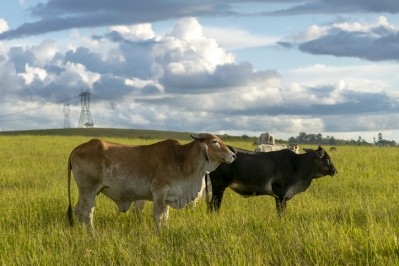Holy Cow’s beef rinds upcycle cattle hides for a nutrient-dense, sustainable & economically stimulating snack
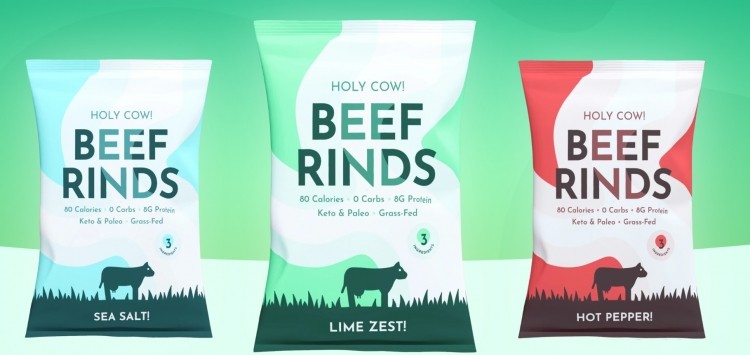
Holy Cow’s beef rinds offer an Indonesian-inspired twist on the beloved American pork rind, but instead of using pork skins, Holy Cow uses skins from grass-fed, grass-finished cows raised on farms practicing regenerative agriculture resulting in a snack that is better for people and the planet, co-founder Javon Bangs told FoodNavigator-USA.
He explained that Holy Cow fries “beef skins,” as he likes to call the hides, in grass-fed tallow using a unique process that results in a thin rind that “melts in your mouth” and has a “subtleness of flavor and texture” that sets it apart from its pork-based counterpart, which can have an inconsistent texture with the occasional hard crisp that “hurts your teeth” and a heavier flavor profile that can turn off some consumers.
With 8 grams of protein per 80 calorie serving, beef rinds rival the nutritional profile of pork rinds, but Bangs says they also offer a better omega-3 to -6 ratio and a more diverse and dense micronutrient profile, plus 7 grams of bovine collagen and zero carbs – making them a keto- and paleo-friendly option.
Beef rinds give farmers new revenue source
But Holy Cow’s rinds don’t just offer “something fresh and something healthier that people can feel good about for their own bodies,” they also offer a more environmentally sustainable and economically beneficial option for suppliers hit hard by the pandemic and other financial pressures in recent years, Bangs said.
He explained that America’s beef consumption is higher than it has been in a decade, but with the demand for leather plummeting in recent years ranchers have few if any options for the mounting number of hides that come with increased production.
Indeed, according to IRI data, sales of beef in the US during the pandemic surged 23.7%, reflecting a $5.8 billion increase in revenue over 2019. But at the same time, social distancing mandates to slow the spread of the coronavirus also slowed demand for hides as tanneries from China to Italy temporarily closed – further depressing an industry already struggling to compete against the rise of synthetic materials.
“When I asked local farmers what they do with the cow skins after slaughter, most of them say they try to sell them to leather processors, but they go for pennies on the dollar because there is no longer a market,” Bangs said.
Selling the hides for little to nothing is a best-case scenario currently as more often the landfill is the only option. In 2019, about 5.5 million cattle hides previously destined for the leather supply chain wound up in landfills where they become a substantial contributor to food waste and increase greenhouse gas emissions.
This shift contributed to an already difficult economic environment for many ranchers and farmers, said Bangs, noting that in the Pacific Northwest where he lives there was a 109% increase in farm bankruptcies from 2019 to 2020.
“This is the largest year-over-year increase out of all of the regions in the US, and so, since we are in the Northwest, we decided to help cattle farms generate more revenue and hopefully gain a little bit of economic independence back” by buying cow hides from farms that have filed for bankruptcy in the recent past but are still in operation, Bangs said.
To provide viable economic relief, Bangs said, Holy Cow pays significantly more than the going rate for cow hides that meet its “strict standards, and are grass-fed and -finished, raised away from pollution sources, have clean living quarters and are raised on regenerative farms.”
Originally this was about $50 a hide, which exceeded the high of the market rate, which was $40, but Bangs said the price may vary going forward as the young company strikes a balance between a fair offer for farmers and maintaining its margins.
So far this strategy not only has provided some farmers with additional revenue, it has allowed the company to upcycle and prevent 50,000 pounds of waste from 500 hides from going to the landfill, Bangs said.
Consistent quality is key for scaling
While Holy Cow’s business model has many admirable traits it also faces significant challenges – including balancing supply and demand.
Currently the business operates using a batch drop model, but Bangs says demand for Holy Cow’s beef rinds is so high that they company wants to transition to full-time production so that the product is always available to those who want it.
To do this though the company also must source more hides that meet its high standards, he said.
“As we are bringing in more and more product to serve customers, we want to make sure we’re keeping that consistent quality because we are so stringent about quality control and we are extremely health conscious. We don’t want to eat or serve food that isn’t organic or sourced from clean environments. So, we do a lot of research to find farms and ranches that meet our level of quality,” which takes time, he said.
As the company brings on more farms and simultaneously generates consumer demand, Bangs said he is optimistic that this year the company will enter a “hyper-growth phase” that will allow it to inspire healthy eating habits, support small businesses and support sustainable, earth-friendly practices.
